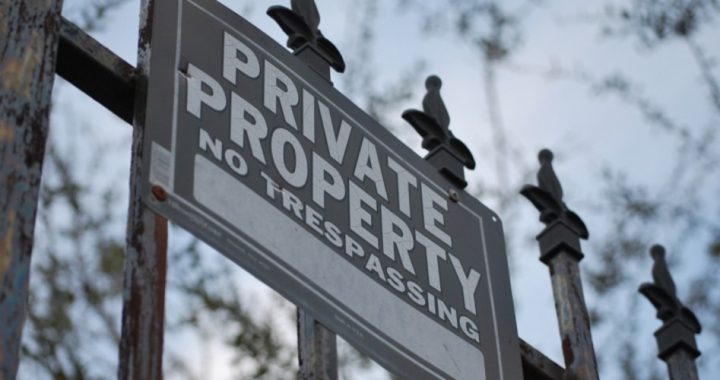
“Surrender means that the history of this heroic struggle will be written by the enemy; that our youth will be trained by Northern school teachers; will learn from Northern school books their version of the War; will be impressed by all the influences of history and education to regard our gallant dead as traitors, and our maimed veterans as fit subjects for derision.” These words from Confederate General Patrick Cleburne during the Civil War are especially prophetic, considering the recent Taliban-like efforts to wipe out all public monuments honoring Confederate icons such as Robert E. Lee and Stonewall Jackson. As current the frenzy against Confederate monuments in public parks and other government-owned land intensifies, some are fighting back by placing Confederate monuments on private land.
“As far as on public property, I don’t think you’ll see any [Confederate monuments] go up,” said Jimmy Hill, who is the commander of the Alabama division of the Sons of Confederate Veterans (SCV). The SCV is a heritage organization of male descendants of men who fought, in some capacity, in the Confederate armies, or in the Confederate government.
Hill predicts there will be more Confederate monuments in reaction to the recent drive to destroy any memorials to men such as Lee or Jackson, but they will be placed on private land, rather than on land owned by a state or local government. For example, a Confederate monument in Orange County, Texas, is being planned, which will be the largest Confederate monument built in a century. It is sponsored by the SCV, with a total expected cost of $60,000.
Stephen Carlton, the chief executive of Orange County, admitted that while he is not happy about the monument going up, he could do nothing about the memorial because it will be on private land. “It’s not setting the image I would like for Orange County,” he said, while conceding, “People do have a right to freedom of speech.”
In Crenshaw County, Alabama, a new monument honors “unknown Confederate soldiers.” It is in a private park.
Perhaps the most interesting Confederate monument is found in Delaware, a state which did not join the Confederate States of America (CSA) in 1861, although there were Delaware men who served in CSA armies. “It’s a lesson in history. It’s about our roots and the sacrifices that those citizens here in Delaware made. To me that’s so honorable,” said Robert Eldreth, who was a leader in the SCV that erected the monument.
But even though the Delaware monument is on private land, the opponents of Confederate monuments are not satisfied. While the monument created little stir when it was first erected in 2007, after the violence in Charlottesville, Virginia, the local chapters of the National Association for the Advancement of Colored People (NAACP) called for its removal anyway — despite its presence on private land. They asked the state to cut funding to the Historical Society, which provided funds to the Marvel Museum, where the new monument is located, unless the monument and the Confederate flag were removed. The governor’s office announced it would support a cut in funding if the monument and flag are not removed.
Eldreth said he understands how black people might take offense at a Confederate symbol like the flag, considering that racists like the Ku Klux Klan have hijacked its use (although they used the United States flag as well). He said, however, that slavery had little to do with why the average Confederate soldier served in the war. “My family was dirt-poor sharecroppers from North Carolina who didn’t own slaves and weren’t fighting to keep them,” Eldreth explained. “They were fighting for fairness. What they believed in was states’ rights.”
Edreth’s explanation illustrates that even after 150 years since the conclusion of the Civil War, its causes and the war aims of each side are still argued about. Even the name of the war is disputed, with many Southern partisans preferring to call it The War Between the States. They contend that a “civil war” is a war fought between two factions for control of the same government. In the case of the war of 1861-1865, however, the eleven states of the Confederacy had no desire to take over the government of the United States, but rather be a separate nation. Their position is that there would have been no war, had Union troops not invaded the South. Union partisans, on the other hand, argue that had the South become a separate nation, then the country would have been weakened, and more vulnerable to foreign invasion.
Detractors argue that the monuments represent slavery. Defenders contend the monuments only memorialize those who served their states in the war. Detractors reply that the monuments were built later, after Reconstruction, as a way to signify “white supremacy.” To be clear, there is little evidence to support the position that the monuments were only built after Reconstruction to signify white supremacy. It should be noted that the reasons no monuments were erected during the Reconstruction era are multiple. Carpetbag, or Northern-backed, governments tended to run the southern states during Reconstruction, and these would not have built such monuments. Another reason that it took almost a generation before such monuments began springing up is that the former Confederate states were economically devastated; they simply did not have the money to build monuments. In fact, the largest single item in the budgets of many southern states was artificial limbs for former soldiers.
In the end, this issue might never be resolved. One way the Confederacy can remember its soldiers seems to be through monuments on private land.



